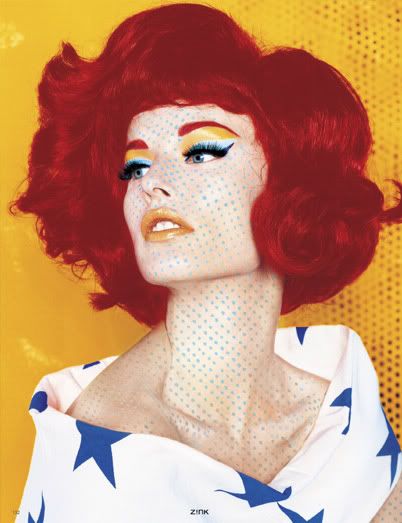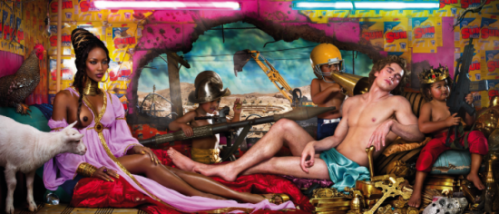It is questioned when we look at art history how much we are allowed to take before it is simply ‘stealing’ ideas. If we look back there are thousands of examples of the context of ideas has been used to influence other artists, so is anything actually original? Andy Warhol was seen to be a early pioneer in the pop art movement yet Mike Ruiz and Roy Lichtenstein both used notions of his work to influence there own to create their own versions of the famous ‘pop art’. But then this can be seen as recontextualising? Botticelli’s famous ‘Venus and Mars’ painting was recontextualised by photographer David LaChapelle in a fine art piece called ‘The Rape of Africa’ to a modern day scene of an African woman troubled by problems like war, mining and child labour. In David’s picture he made the lamb and the rooster placed beside the woman in charge, whereas in Botticelli’s picture, Venus is in charge looking after the fallen Mars. He used a picture that was created in the 1400’s to influence his art of current issues happening in the 21st century. This could be seen as ‘stealing’ from an image that has is still very famous and influential in the art world. Yet what is wrong in investigating an image that has many means in detail to reveal how you interpret something. Picasso repainted a picture he was investigating 42 times to get it right, he noticed something different about it each time. But what is important to remember in depicting art works in art history is that most classical works have a narrative background in which the image is centered around and if recontextualised then this is likely to be lost if the background is not known, causing all meaning to be lost. This is when the question of the ‘why’ behind a piece is important. The ideas that are inherent can be contexualised into today, form now follows function. Elsie Wright and Frances Griffths were 2 young girls who in 1917 cut out pictures of fairies and took pictures of themselves with these fairies. They soon got out and the world believed that it was in fact photographic evidence that fairies did in fact exist. Because the of cultural context of the time, photographs where not known to be fake, anything that was photographed must be real. And it wasn’t until the 1980’s that Frances came forward and told the world they were in fact fake but because the cultural context of Britain had changed from the depressed, war infused country to a realistic country, it was accepted that a camera could lie. The magic of fairies was carried on by Matt Collishaw in 1990’s of famous images of a man trying to catch fairies with a net, the myth of fairies was still around yet nobody fell into the magical trap that they were again real. In 2004 Nokia hired Rankin, the famous fashion photographer to capture the feel of the Cottingly fairy photos in a new modern way for their advertising campaign for the Nokia 7610. He created modern, colour images for the campaign and really kept the magic alive of the Cottingly photographs but with a modern twist. In 2007 the BBC were also inspired by Rankin’s interpretation of the photographs and created an ident (the break between adverts and a show) which really highlights the magic of the forest and the existence fairies. So the context may have changed over time but the origins are still very clear that the Cottingly photographs will forever keep the world in awe of the existence or non-existence of fairies and the relationship of playing with reality still interests the public to this day.
Tuesday, 11 October 2011
Subscribe to:
Post Comments (Atom)




http://www.iconique.com/flash/style/davidlachapelle-therapeofafrica.html
ReplyDeletehttp://www.youtube.com/watch?v=vWDdyZWwSZs
http://img.photobucket.com/albums/v314/sweetdisguise/graphics/mzink3.jpg
http://s3.amazonaws.com/hoaxipedia/cottin3.jpg
http://www.fashion.at/foto/rankin7-2004.jpg
http://www.iconique.com/flash/style/davidlachapelle-therapeofafrica-botticelli.jpg
http://africasacountry.files.wordpress.com/2010/05/lachapelle_rape-of-africa1.jpg?w=500&h=214